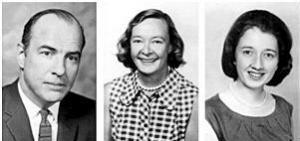The First Pharmacological Treatment for Narcotic Addiction: Methadone Maintenance

Overview
Originally Published: 02/19/2011
Post Date: 03/03/2011
by The Centennial - Rockerfeller University Hospital
Attachment Files
Article - The First Pharmacological Treatment for Narcotic Addiction: Methadone Maintenance
Summary/Abstract
In late 1963 Dole recruited two additional researchers to the project: clinical investigator Mary Jeanne Kreek and psychiatrist Marie Nyswander (1919-1986). In early 1964, this team began studies with heroin addicts at the Rockefeller Hospital ...
Content
Heroin abuse surged in the United States in the early 1960s, becoming a major public health problem. At the time, most people attributed addiction to a lack of willpower, or to antisocial or criminal behavior. The urgency of dealing with these issues came to the attention of Rockefeller researcher Vincent P. Dole (1913-2006) in 1962, when he was acting chairman of the Health Research Council of the City of New York's committee on unresolved health problems, which was grappling with the heroin problem in New York. Dole proposed that addiction was an illness, a "metabolic" disease with behavioral manifestations. He was so committed to understanding this problem that he changed the focus of his laboratory, where he had studied obesity and metabolism, to heroin addiction and new pharmacological approaches for chronic treatment. In late 1963 Dole recruited two additional researchers to the project: clinical investigator Mary Jeanne Kreek and psychiatrist Marie Nyswander (1919-1986). In early 1964, this team began studies with heroin addicts at the Rockefeller Hospital which, within six months, established the mode of action and potential effectiveness for maintenance treatment of methadone, a synthetic drug that had been used for short-term detoxification in a few clinics. The researchers also contrasted methadone's effects to the action of short-acting opiates such as heroin and morphine. These early studies determined that methadone is long-acting in humans, relieves the addicts' craving for heroin, and prevents withdrawal symptoms. In addition, methadone itself does not produce euphoria, and through the mechanism of cross-tolerance, it prevents addicts from feeling any "high" from an injection of heroin—a phenomenon the team called "narcotic blockade." The former heroin addicts needed to take one oral daily maintenance dose which allowed them to function normally. In 1965, translational studies of methadone maintenance treatment involving additional patients were conducted by Nyswander at what was then Manhattan General Hospital. Early in the research, in 1964, Kreek planned and initiated long-term prospective studies of the physiological effects and medical safety of methadone maintenance. This work was central to the approval in 1973 by the FDA of methadone for the long-term pharmacotherapy for opiate addiction. In parallel with colleagues at Cornell, Kreek also developed the first analytical technique for measuring methadone and other opioids in blood, other fluids, and tissues, which led to the documentation of the unique long-acting properties of this medication. Despite continuing public controversy over the nature of drug addiction, methadone maintenance remains the most effective therapy for managing heroin and other opiate addiction and today is provided to about one million people worldwide. See Attached PDF File





